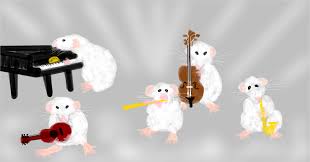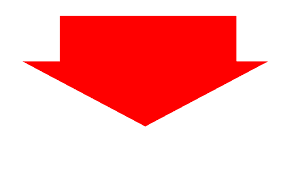
Music Composition – Using Geometrical Inversions
Transcript:
Hello, this is Mike Hayes and I’d like to welcome you to the
second tape in our music composition series; the first video in
this series focused on creating original melodies and you might
like to check it out if the concept of geometrical inversions in
new to you. On this video we’ll use geometrical inversions to
give us an exact way of creating psychological contrasts from any
given chord in a composition; and this can be useful when there
is doubt as to what the reciprocal chord structure might be; or
alternatively it offers us an exact way of finding the reciprocal
chord structure in those cases in which the latter are entirely
unknown.
Now, just before we go across to the piano keyboard and
guitar and have a look at geometrical inversions work there I’d
to just give you a brief visual concept to what we’re setting out
to achieve with this process. essentially what we’re wanting to
do is to create a chord that is a direct reflection and accurate
reflection in tearms of interval distance ah, to whatever chord
we’re working on. Now let’s say for example you’ve written a song
and we’re wanting to find out what is the contrasting chord to C
major. So. if we look at our photo, and if we imagine that this
line here, that I’m drawing represents middle c on the piano, and
that this line that I’m drawing here , this vertical structure is
the chord of C major, so we have C and I’m calling this line our
pitch axis, I’m creating the chord of C major C, E and then I
have G. Now, what we’re wanting to do with our geometrical
inversion is to find out what is the chord that’s reflected in
the exact opposite direction from our C major, what is the chord
structure that is created that has the exact same interval
distance as the C major.

So, let’s see in between the notes C and E we have four semitones
and then in between the notes E and G we have three semitones, so
using C as my starting point if I move down four semitones from
middle C on the piano keyboard (and I’ll do this in a moment),
just so you can see it, we’ll have the note A flat, and the if I
move down (so that’s our interval of four, moving in this direction),
and then if I move down three more semitones from A flat, I’ll have
the note F; so the chord that is opposite to C major is in fact
F minor, we have C major and then the geometrical inversion that
we’ve just done here show us that the chord that is contrasting to
C major is in fact F minor. Here we are here on the piano keyboard,
our pitch axis is going to be C moving up to the note E we find we
have four semitones: 1, 2, 3, 4. then from E to G is three semitones;
E to F. F to F sharp and then G. so we have add four, add three in this
direction gives us C major.

Let’s go in the opposite direction now to find out what chord is the contrasting chord to C major so we’re going to go down, we’re going to go minus four semitones: 1, 2,3, 4 and we find we have A flat and then moving down from A flat three more we find we have the note F. so A flat to G, G to G flat, G flat to F. So, now we find the contrasting chord to C major is F minor. Applying the exact same process to the guitar fingerboard this is how our geometrical inversion of a C major triad would look. Here is the C that is the equivalent to middle C on the piano that’s our reference point, our pitch axis we have C, E and G to create our C major triad and down here again we have our C. this time we’re building down from the C, we have our A flat and our F and that creates our F minor triad; let’s have a listen to how this sounds. here’s one more example on the guitar fingerboard; once you know what the reciprocal chord is the next step is to
choose the most suitable chord inversion for your particular musical project. in this instance I have a second inversion C major triad and I’m using the process of voice leading to make the most musical transition to the nearest F minor triad; so I have the G in the C major chord moving to the A flat in the F minor triad, the C is common to both chords and I’m moving the E note in the C major triad to the F note in the F minor triad and let’s have a listen to how that sounds. So. there you have it! There’s no need to spend hours searching for that mystery chord ah, this whole process takes all the guess work out of it and it gives you an exact way of working out what the ah, contrasting chord is. So, I hope you’ve enjoyed this video and we’ve been talking about musical composition and in particular ‘how to create contrasting chordal textures using geometrical inversions; I look forward to catching up with you on the next tape.
Ready To Take Your Guitar Playing to the Next Level?
If so, then I’ve got something else you’ll definitely want in on
then…
(All you’ve gotta do is simply click the button below to discover the secrets most Guitar Players will NEVER know about playing music on the guitar …)



